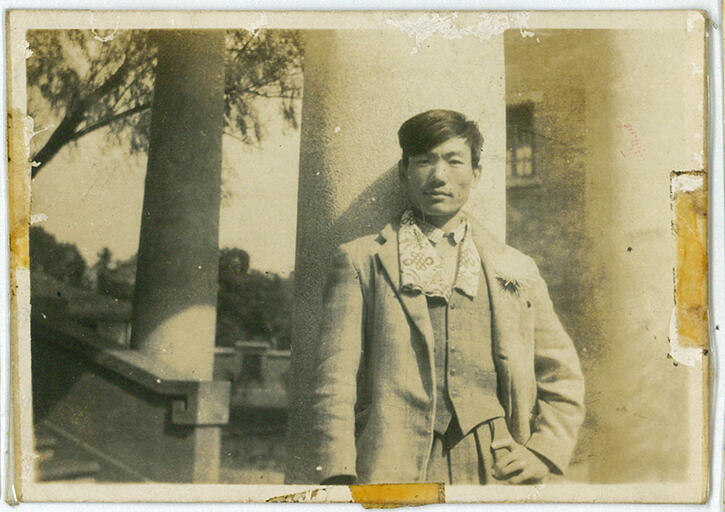Shiy De-Jinn’s Portraits Return a Knowing Look
A survey at Chishang Art Centre, Taiwan, positions the artist’s tenderly crafted landscapes alongside his lesser-known depictions of handsome young men
A survey at Chishang Art Centre, Taiwan, positions the artist’s tenderly crafted landscapes alongside his lesser-known depictions of handsome young men

There’s nothing subtle about a doe-eyed twink. Despite this inarguable truth, in many commentaries, Taiwanese painter Shiy De-Jinn’s homosexuality – an open secret during his lifetime – is rarely remarked upon. The subjects of his paintings are said to return a knowing look. However, it is a different aspect of the artist’s practice that is most loudly celebrated: his tenderly crafted landscapes.
At 25, after enduring war and an attempted arranged marriage, the Sichuan-born artist emigrated to Taiwan in 1948 and spent the remaining three decades of his life lovingly scrutinising the features of the island. His ink-wash and watercolour works are love letters to the dramatic landscapes and flamboyant wildlife of the Taiwanese countryside. His affectionate eye has been embraced as representative of Taiwanese national sentiment and self-image.

However, Shiy was also a painter of young men, and his rich portraits of tanned and wiry youth glow with the same adoration he had for nature. In ‘We Are History’, a survey exhibition at Chishang Art Centre, curator Michael Ku consolidates these two strands of Shiy’s practice.
It has been a busy couple of years for Shiy’s legacy. Four decades on from the artist’s death in 1981, his works have been on display across Taiwan in a series of retrospective exhibitions, most of which have focussed on his landscapes and architectural sketches. Ku, however, presents only a small – if emblematic – sample of this sphere of Shiy’s work. In An Isolated House (1971), the spindly frame of a house bleeds forth from the inky greyscale of the morning sky behind it. Likewise, in Temple (1979), the building’s traditional curved roof echoes the dark mountain peaks that rise up behind it. These ink paintings offer insight into why Shiy is credited with distilling some of the Taiwanese landscape’s essential characteristics.

Hung on the opposite wall from his landscapes, Shiy’s portraits might almost be admiring the view. Among them is Portrait of a Man (c.1980), in which a figure – who appears barely old enough to be referred to as such – seems unaware that he’s lost his shirt. Shiy’s brush fixates on the way light touches the boy’s lips, the way blood flourishes in his cheeks. The artist’s fondness for his subject is clear. In another portrait, Young Man (1966), a boy cocks his hip and buries his thumbs deep in the denim of his waistband. We can only assume his expectant smirk was reciprocated. In contemporary queer contexts, much has been made of this strand of Shiy’s imagery – assertions about gender thrust awkwardly onto the paintings as precariously as the sailor’s hat on the head of Shiy’s muse. Instead, Ku acknowledges Shiy’s desire as an inseparable facet of the artist’s complex oeuvre.
In fact, Ku’s curation dwells on the moments of synthesis in which Shiy’s subjects collide, his yearning appreciation of young men collapsing into his reverence for the landscape. Boys at the Beach (1967), for instance, depicts the lithe forms of traditional Taiwanese fishing boats with the same care afforded to the lean adolescents that linger before them. The artist’s lustful eye invigorates his testimony of the Taiwanese landscape in the same way that David Hockney’s did California.

Much of the exhibition is made up of works from the collection of the National Taiwan Museum of Fine Arts. In the museum’s archive, Shiy’s sketches of boys are as innumerable as hills and flowers. With ‘We Are History’, Ku delivers a survey that identifies the artist’s yearning gaze as inextricable from the same vision that has come to define the country’s landscapes, framing Shiy’s watercolour vistas as the home of the men he adored.
Main image: Shiy De-Jinn, Temple (detail), 1979, ink and watercolour on paper, 65 × 66 cm. Courtesy: National Taiwan Museum of Fine Arts























